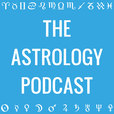
Summary: <br> In episode 58 astrologer Kenneth Miller joins me to talk about the astrology surrounding the Star of Bethlehem and the birth chart of Jesus.<br> During the course of the show we talk about the history surrounding this topic, some of the different theories about what the Star of Bethlehem was, and try to explain some of the ways that astrologers and historians have approached the subject in the past.<br> The music featured in this episode is <a href="https://en.wikipedia.org/wiki/We_Three_Kings" target="_blank">We Three Kings</a> by John Henry Hopkins, Jr.<br> Below you will find the show notes and and extended synopsis of some of the topics that we covered during the course of the show, followed by links to listen to the recording of this episode of the podcast.<br> Outline of the Episode<br> <br> The church only established December 25 as Jesus’ birthday in the 4th century.<br> We have no evidence for what part of the year Jesus was born in, and only a very rough idea of the range of years that he would have been born in.<br> The story about the Star of Bethlehem and magi only only appears in the gospel of Matthew, out of the four canonical gospels of the New Testament (Matthew, Mark, Luke, John).<br> This is a bit odd since the other synoptic gospels (Matthew, Mark, Luke) share many of the same stories, with similar wording and sequence, but not here.<br> This raises the possibility that some historians consider where the story of the magi could have been a sort of political tool used in order to promote the Christian belief that Jesus was the messiah.<br> For others who take the story in Matthew as representing, at least in part, some elements of an actual historical event, the identifying the Star of Bethlehem becomes a sort of access point for finding the birth chart of Jesus.<br> There is a long historical tradition of different astrologers speculating about the Star of Bethlehem and nativity of Jesus.<br> Some astrologers were either killed or imprisoned for this by the Inquisition.<br> Speculation about the Star of Bethlehem among astrologers, astronomers, and historians continues to this day.<br> <br> Analysis of the Story in Matthew<br> <br> * Occurs in chapter 2 of Matthew. Extremely short. 2-3 paragraphs.<br> * It calls them “magi” in the Greek. It doesn’t specify how many there were. Later tradition came to hold that there were three because they offered three gifts.<br> * The say that they have come because they observed his star at its rising. Rising here = anatolē (ἀνατολή). This is often translated as “east”, but anatolē is a technical term in Hellenistic astrology that means either 1) rising over the eastern horizon / Ascendant / rising sign, or 2) making a heliacal rising when it emerges from under the beams of the Sun. This is where we get the morning star / evening star distinction from.<br> * The magi originally show up in Jerusalem asking where Jesus is because they saw this astrological indication saying that someone important had been born. Herod tries to use the astrologers to locate Jesus, and the story initially sets it up so that the magi were going to be unwitting accomplices in Herod’s murder of Jesus, but at the end of the story they were warned about Herod in a dream, so they go back home through an alternative route.<br> <br> * Later Christian tradition had an issue with this story because it appears to legitimize astrology, putting a group of astrologers front and center at the birth of Jesus. Later writers tried to deal with this by interpreting the story so that the magi going a different route to return home meant that they gave up their previous interest in astrology. However, I don’t think that this interpretation is necessary for the narrative structure of the story. Instead the magi going home a different way just ties up the loose end from the beginning of the story where they almost unwittingly led Herod to Jesus.<br>
